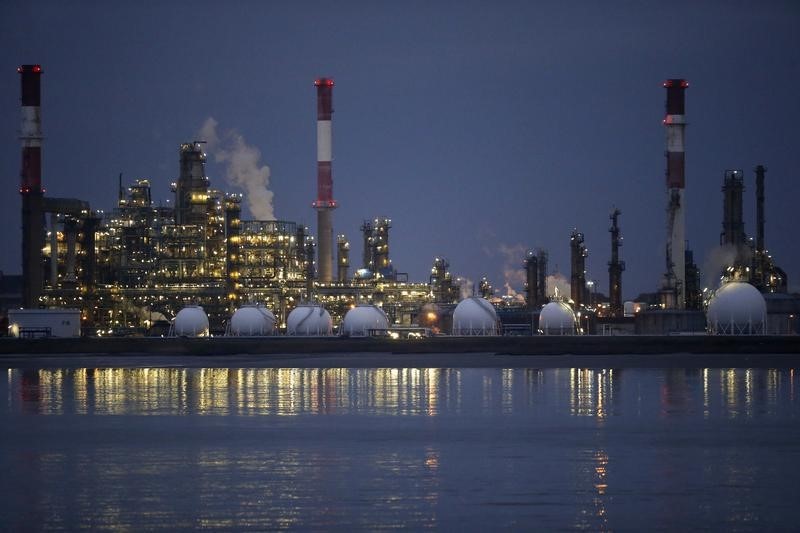Investing.com-- Oil prices moved little on Wednesday as traders kept away from big bets in anticipation of more cues on interest rates, while industry data on U.S. inventories offered middling cues.
Crude prices turned largely rangebound this week after marking some gains in the prior week on the prospect of more U.S. sanctions on Russian oil supplies. But this momentum did not hold amid renewed concerns over weakening demand in China, as well as fears of a supply glut in the coming year.
Oil markets were also pressured by a firmer dollar, as traders remained biased towards the greenback before the conclusion of a Federal Reserve meeting on Wednesday.
Brent oil futures expiring in February steadied at $73.74 a barrel, while West Texas Intermediate crude futures was up at $70.30 a barrel by 9:06 ET (14:06 GMT).
US crude inventories shrink, but product stockpiles rise- API
Data from the American Petroleum Institute showed on Tuesday evening that U.S. oil inventories shrank by 4.7 million barrels in the week to December 13, more than expectations for a draw of 1.9 mb.
But gasoline inventories grew by 2.4 mb, while distillates added 700,00 barrels.
The reading indicated that while overall U.S. supplies were tightening, fuel demand was also likely cooling in the face of lessened travel during the winter season. This trend is expected to continue for at least the next two months.
Still, last week’s draw comes after two straight weeks of outsized builds. The API data also usually heralds a similar reading from government inventory data, which is due later on Wednesday.
Fed awaited for more rate cues
Focus this week was squarely on the Fed's meeting, which concludes later on Wednesday.
While the central bank is widely expected to cut interest rates by 25 basis points, traders are watching for any signals that the Fed will adopt a slower pace of cuts in the coming months, especially as recent data showed sticky inflation, strong consumer spending and a robust labor market.
Expectations of such a scenario boosted the dollar, which weighed on oil prices.
Relatively higher rates next year are also expected to weigh on economic growth, potentially curbing demand for oil. But resilience in the U.S. economy may offset this trend.
Concerns over slowing demand remained in play after top importer China posted a slew of middling economic readings over the past week. Signals on more stimulus measures in the country also largely underwhelmed.
(Ambar Warrick contributed to this article)
